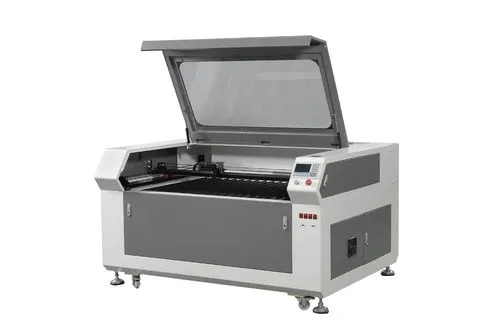A Guide to Choosing the Right CO2 Laser Cutter
CO2 laser cutters are a popular choice for many businesses and individuals looking to make precise cuts in a variety of materials. They are used in a wide range of industries, from automotive to aerospace, and can be used to cut a variety of materials, including wood, plastic, metal, and even glass. However, with so many different types of laser cutters on the market, it can be difficult to know which one is right for your needs. This guide will help you understand the different types of CO2 laser cutters and how to choose the right one for your project.
Types of CO2 Laser Cutters
The first step in choosing the right CO2 laser cutter is to understand the different types available. There are three main types of CO2 laser cutters: gas, solid-state, and hybrid.
Gas Laser Cutters
Gas laser cutters use a gas mixture of carbon dioxide, nitrogen, and helium to create a laser beam. This type of laser cutter is typically used for cutting thicker materials, such as wood, metal, and plastic. Gas laser cutters are more expensive than other types of laser cutters, but they are also more powerful and can cut through thicker materials with greater precision.
Solid-State Laser Cutters
Solid-state laser cutters use a solid-state laser diode to create a laser beam. This type of laser cutter is typically used for cutting thinner materials, such as paper, fabric, and thin plastics. Solid-state laser cutters are less expensive than gas laser cutters, but they are also less powerful and can only cut through thinner materials.
Hybrid Laser Cutters
Hybrid laser cutters are a combination of gas and solid-state laser cutters. They use a combination of gas and solid-state laser diodes to create a laser beam. This type of laser cutter is typically used for cutting a variety of materials, including wood, metal, plastic, and paper. Hybrid laser cutters are more expensive than other types of laser cutters, but they are also more powerful and can cut through a variety of materials with greater precision.
Factors to Consider When Choosing a CO2 Laser Cutter
Once you understand the different types of CO2 laser cutters, you can begin to narrow down your choices by considering the following factors:
Power
The power of the laser cutter is an important factor to consider when choosing the right one for your project. Gas laser cutters are the most powerful, followed by hybrid and then solid-state laser cutters. The power of the laser cutter will determine the thickness of the material it can cut through.
Speed
The speed of the laser cutter is also an important factor to consider. Gas and hybrid laser cutters are typically faster than solid-state laser cutters. The speed of the laser cutter will determine how quickly it can cut through the material.
Precision
The precision of the laser cutter is also an important factor to consider. Gas and hybrid laser cutters are typically more precise than solid-state laser cutters. The precision of the laser cutter will determine how accurately it can cut through the material.
Cost
The cost of the laser cutter is also an important factor to consider. Gas and hybrid laser cutters are typically more expensive than solid-state laser cutters. The cost of the laser cutter will determine how much you will need to spend on the machine.
FAQs
What is a CO2 laser cutter?
A CO2 laser cutter is a type of laser cutting machine that uses a gas mixture of carbon dioxide, nitrogen, and helium to create a laser beam. This type of laser cutter is typically used for cutting thicker materials, such as wood, metal, and plastic.
What are the different types of CO2 laser cutters?
The three main types of CO2 laser cutters are gas, solid-state, and hybrid. Gas laser cutters are the most powerful, followed by hybrid and then solid-state laser cutters.
What factors should I consider when choosing a CO2 laser cutter?
When choosing a CO2 laser cutter, you should consider the power, speed, precision, and cost of the machine. The power of the laser cutter will determine the thickness of the material it can cut through, the speed will determine how quickly it can cut through the material, the precision will determine how accurately it can cut through the material, and the cost will determine how much you will need to spend on the machine.





